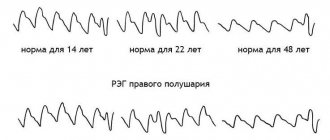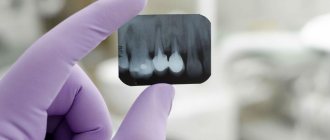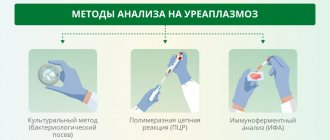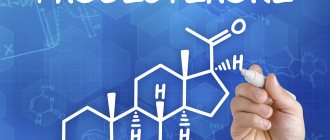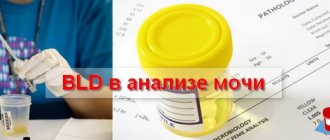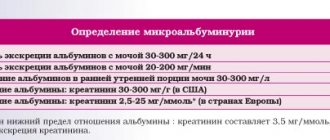Increased aggregation is a marker of hyperaggregation syndrome and thrombophilia. The most commonly used are the Born turbidimetric method, based on recording changes in the light transmission of platelet-rich plasma, and the method for studying platelet aggregation, based on the analysis of light transmission fluctuations caused by a random change in the number of particles in the optical channel.
Material for research.
Citrate platelet rich plasma
Research method
is determined by the operating procedure on a particular type of aggregometer.
Solutions of ADP, ristocetin, collagen, adrenaline, and arachidonic acid are most often used as inducers. Solutions of thrombin, serotonin, etc. can also be used.
Platelet aggregation - what is it?
Before proceeding to the analysis of this term, you should understand what platelets are. These cells are formed in the bone marrow and then enter the bloodstream. They are the smallest cells in the blood, their diameter does not exceed 3 microns. Deprived of a core.
Platelets are responsible for blood clotting when the integrity of the blood vessel wall is damaged. After damage to a vessel, cells begin to actively migrate to the affected area. At the site of damage they are activated, and the process is irreversible. In the activated form, the cells attach to the affected area and also stick together. The cause of activation may be damage to the vessel, as well as any change in the internal or external environment. After aggregation, a primary platelet plug is formed, which stops blood loss.
Platelet aggregation is an irreversible process of platelet clumping after transition to the active form.
When the aggregation process intensifies, the patient experiences increased thrombus formation. If activity decreases, excess blood loss occurs. Therefore, platelet aggregation is considered a determining process for complete homeostasis (blood clotting).
Normally, in the absence of external influences, platelets do not attach to the walls of blood vessels and do not stick together.
Reasons for decreasing and increasing aggregation
Increased aggregation level or hyperaggregation is a condition in which blood flows slowly through the vessels and quickly clots. Provocateurs of such deviation can be:
- diabetes;
- hypertonic disease;
- cancer of the kidneys, gastrointestinal tract or blood;
- vascular atherosclerosis;
- leukemia;
- sepsis;
- lymphogranulomatosis;
- surgical excision of the spleen;
- menstruation in women.
Moderate platelet hyperaggregation during pregnancy is normal. This deviation occurs due to the need to nourish the placenta with blood. The value reaches its peak in the 3rd trimester of gestation.
A decrease in platelet aggregation occurs due to the following pathologies:
- thrombocytopathy;
- diseases of the hematopoietic system;
- use of antiplatelet agents;
- renal failure;
- dysfunction of the thyroid gland;
- anemia;
- alcohol abuse.
Platelet aggregation
When should you get tested?
Indications for the study are:
- excessive bleeding gums;
- nosebleeds;
- the appearance of hemorrhagic rashes;
- prolonged blood cessation even with minor vascular damage;
- tendency to bruise;
- the need for treatment with antiplatelet agents and anticoagulants;
- pregnancy with a high risk of developing gestosis or bleeding during childbirth;
- pathologies of the hematopoietic system.
The study must be carried out before surgery. A low degree of platelet aggregation can lead to large blood losses during surgery, which must be taken into account.
The analysis is mandatory for pregnant women to assess the functional activity of platelets. The results of the study will help select preventative agents for excessive blood loss during childbirth.
In addition, this indicator is determined if treatment with antiplatelet drugs and anticoagulants is necessary. Aspirin in small dosages is indicated for people with atherosclerosis and pathologies of the cardiovascular system. Based on the analysis data, tentative forecasts are made for the body’s reaction after taking aspirin.
It is known that platelet aggregation is also affected by drugs from other groups (antibiotics, antihistamines, anti-inflammatory drugs). Therefore, analysis is also advisable when planning to take these drugs.
Read further: Norm of platelets in the blood of women by age
Features in children
Despite the fact that increased aggregation capacity is usually found in the adult population, recently there has been an increase in cases of the disease in children.
Hyperaggregation can be either hereditary or acquired. The causes of elevated platelet levels are not much different in adults. Mainly:
- diseases of the circulatory system;
- infectious and viral diseases;
- surgical intervention.
- In children under one year of age, hyperaggregation can be caused by dehydration and anemia. In adolescence, stressful situations and physiological growth of the body play an important role.
- Hypoaggregation in children manifests itself in the form of nosebleeds and bruises. Girls in adolescence may experience heavy periods. In 100% of cases, pinpoint rashes are observed on the skin, and 20% of children experience bleeding gums.
Treatment begins with finding out the cause of the deviation from the norm in platelet aggregation ability. Sometimes adjusting your diet and drinking regime is enough. In some cases, treatment of the disease that caused the abnormality is required.
Platelets in child tests:
If necessary, a hematologist will conduct an additional examination and prescribe medication according to the patient’s age and severity of the disease.
How to prepare for submitting biomaterial?
The study of platelet aggregation is carried out strictly on an empty stomach, with a minimum interval of 6 hours after the last meal. 24 hours before the visit to the laboratory, the following are excluded: alcohol intake, sports training and psycho-emotional stress. Smoking should be stopped for 3 hours before blood collection.
If you are taking medications, you should consult your doctor in advance. Since drug exposure significantly changes the indicator and can lead to false results. You should not independently adjust the timing of taking medications and cancel them at your own discretion.
References
- Clinical laboratory diagnostics, National guidelines, Volume 1, Dolgov V.V., Menshikov V.V., 2012, pp. 761-765
- Kozlovsky V. I., Kovtun O. M., Seroukhova O. P., Detkovskaya I. N., Kozlovsky I. V. Research methods and clinical significance of platelet aggregation. Focus on spontaneous aggregation // Vestnik VSMU. 2013. No. 4.
- Puri RN, Colman RW.ADP-induced platelet activation.Crit Rev BiochemMol Biol. 1997;32(6):437-502. doi: 10.3109/10409239709082000. PMID: 9444477.
- Murugappa S, Kunapuli SP. The role of ADP receptors in platelet function.FrontBiosci. 2006 May 1;11:1977-86. doi:10.2741/1939. PMID: 16368572.
- Barbara Lunghi, Anna Lecchi, Rosa Santacroce, Mariangela Scavone, Rita Paniccia, Andrea Artoni, Christian Gachet, Giancarlo Castaman, Maurizio Margaglione, Francesco Bernardi, Marco Cattaneo. Severe bleeding and absent ADP-induced platelet aggregation associated with inherited combined CalDAG-GEFI and P2Y12 deficiencies.Haematologica 2020;105(7):e361-e364
Interpretation of a blood test for platelet aggregation
It is important that the deciphering of the received data is carried out exclusively by the attending physician. Independent attempts to interpret the data obtained may lead to erroneous conclusions. The information presented in the article may be used for informational purposes.
The interpretation of the analysis is based on assessing the nature of platelet aggregation: complete/incomplete, one- or two-wave. Percentages are used as standard units of measurement.
The norm of the indicator when performing aggregation with:
- ADP 0 µmol/ml – from 60 to 90 percent;
- ADP 5 µmol/ml – from 1.4 to 4.3%;
- adrenaline - from forty to seventy percent;
- collagen - from fifty to eighty.
The value is relevant for patients of both sexes and any age category.
What can affect the indicator?
If a deviation from the norm is detected, the influence of external and internal factors should be excluded. It is known that smoking and high levels of fat in the body lead to an increase in the process of platelet aggregation.
The following drugs have a significant effect on platelet aggregation: aspirin, COX-1 and COX-2 inhibitors, non-steroidal anti-inflammatory drugs, anticoagulants, colostazol, dipyridamole, antimicrobial agents, cardiovascular drugs, urokinase drugs, tissue plasminogen activators, propranolol, etc.
It should be noted that platelet aggregation is not determined in the case of hemolysis of the taken biomaterial. Hemolysis refers to the situation when the red blood cells in the sample are destroyed and their contents are released into the plasma. Hemolysis occurs when the algorithm for collecting venous blood is violated, as well as when the rules for storing and transporting biomaterial are not followed. In this case, the study is canceled and venous blood is taken again.
Indications for analysis
Platelet aggregation is studied when:
- hemorrhagic disorders (increased bleeding);
- thrombophilia (coagulation disorder with an increased risk of thrombosis);
- severe atherosclerosis;
- diabetes mellitus;
- before performing surgical interventions;
- during pregnancy;
- when monitoring the effectiveness of anticoagulant and antiplatelet therapy.
Also, this study is important in the diagnosis of hereditary hemorrhagic thrombocytopathies.
Research methods
The method for determining the indicator depends on the laboratory and the type of aggregometer. The reliability and value of the research results obtained does not depend on the chosen methodology. The most popular methods are the use of solutions of adenosine triphosphate, ristocetin, collagen, adrenaline and arachidonic acid. Let's take a closer look at the essence of each technique.
Adenosine triphosphate method
After receiving the test result, patients ask themselves: what does platelet aggregation with ADP mean? Explanation of the abbreviation ADP - adenosine triphosphate. It is known that a small amount of ADP causes platelets to become activated and subsequently stick together. The process is characterized by a two-wave flow. The first stage of aggregation occurs due to the action of ADP. The secondary wave begins after the release of specific molecules (agonists) from platelets. When adding a large amount of ADP (more than 1*10-5 mol), it is not possible to detect the separation of the two phases, since they merge.
When performing the study, specialists pay special attention to the number of waves, completeness, speed and reversibility of the process. Detection of a two-wave process at small doses of ADP is a sign of increased sensitivity of platelets. Reversible and incomplete platelet aggregation with ADP-1 indicates failures in platelet activation.
Method with ristocetin
The study is carried out to quantitatively determine the von Willebrand factor in the patient being examined. This is a hereditary pathology characterized by disturbances in the process of blood clotting.
The method is based on the direct effect of ristocetin on the interaction between the factor and the glycoprotein. Normally, ristocetin has a stimulating effect on this process. This effect is not observed in patients with hereditary pathology.
It is important to carry out a differential diagnosis, since von Willebrand disease is similar to Bernard-Soulier syndrome. This is a hereditary pathology, against the background of which a person’s platelets completely lose the ability to perform their functions. However, after adding a deficient clotting factor (for von Willebrand disease), platelet aggregation is restored in patients. For Berne-Soulier syndrome, such recovery is not possible.
Collagen method
A distinctive feature of aggregation with collagen is a long latent phase necessary for the activation of the phospholipase enzyme. The duration of the latent phase varies from 5 to 7 minutes and depends on the concentration of collagen used.
After this phase is completed, platelet granules are released and thromboxane is produced. As a result, interaction and adhesion between platelets increases.
Adrenaline method
The effect of adrenaline on platelet adhesion is similar to the effect of ADP. The process is characterized by a two-stage process. It is assumed that adrenaline is able to directly affect platelets, increasing the permeability of their cell wall. Which leads to increased sensitivity to released specific molecules.
Arachidonic acid method
Acid is a natural catalyst for the process of cell gluing. She is not able to directly influence them. Arachidonic acid exerts its effect indirectly through enzymes, secondary messengers and calcium ions.
The aggregation process is rapid, usually in one stage. This type of research is relevant when the patient is taking medications.
Reasons for deviation of the indicator from the norm
To fully understand the reasons for the deviation of the indicator from the norm, we will consider the reasons for each method separately.
ADP more than 85%
Indicators of aggregation with adenosine triphosphate that are overestimated by more than 85% are recorded when:
- coronary heart disease, in which there is a disruption in the normal blood supply to the cardiac myocardium. One of the causes of the pathology is arterial thrombosis. In this case, platelets begin to stick together without the influence of external factors and damage to blood vessels, clogging the lumen of the vascular bed and disrupting the normal blood flow (when a blood clot breaks off, a heart attack or ischemic stroke develops). After blocking 75% of the lumen of an artery, a person experiences a decrease in blood flow to the organ. Which naturally causes a lack of incoming oxygen, tissue hypoxia and organ atrophy. The pathology is characterized by a chronic course and steady progress. Competent therapy can slow down pathological damage to the myocardium;
- acute stage of myocardial infarction, as one of the clinical forms of coronary heart disease. The stage is characterized by necrosis (death) of an entire section of the myocardium;
- blood hypercoagulation syndrome can be physiological in nature or develop with combined pathologies. In other words, the syndrome is referred to as “blood thickening.” It is a normal option for pregnant women after the 2nd trimester. In non-pregnant women and men, indicates the development of pathological processes;
- inflammation of internal organs of various localization and etiology.
The reason for the increased degree of aggregation in a sample with collagen or ristomycin (more than 85%) is hyperaggregation syndrome.
Platelet aggregation with adrenaline is increased (more than 81%) in coronary heart disease, acute myocardial infarction, as well as against the background of extensive injuries and stress overexertion.
ADP reduction up to 65%
A decrease in platelet aggregation after exposure to ADP to 65% indicates:
- thrombocytopathy - combines various pathologies that arise due to the inability of platelets to activate and stick together, forming a primary thrombus and triggering a further cascade of hemostasis. According to statistics, every twentieth person has thrombocytopathy to varying degrees. The disease can be hereditary or acquired. In this case, the patient experiences a decrease in blood clotting, even with a normal platelet count;
- pathologies of the liver or kidneys, leading to impaired utilization of toxic substances. There is a deposition of toxic substances that interfere with the normal physiological activity of platelets;
- disturbances in the functioning of the endocrine system, in particular, excessive activity of the thyroid gland.
Low values of the indicator in a test with adrenaline (up to 61%) and collagen (up to 65%) are detected with thrombocytopathy and taking medications with anti-inflammatory activity.
The reason for the decrease in the rate in the study with ristomycin to 65% is von Willebrand disease.
Features during pregnancy
The level of aggregation during pregnancy is of great importance. The fact is that disruption of this process leads to serious consequences.
The norm during pregnancy is considered to be 150–380 x 10^9/l.
A slight increase in the indicator is associated with placental blood circulation and is considered normal. The upper threshold should not exceed 400 x 10^9/l.
The normal level of aggregation with the addition of any inductor is 30–60%.
Hyperaggregation
Platelet hyperaggregation is dangerous not only for the mother, but also for the baby, as it can cause miscarriage or spontaneous abortion in the early stages. Doctors name the main reasons for increased platelet aggregation during pregnancy:
- dehydration of the body as a result of vomiting, frequent bowel movements, insufficient drinking regimen;
- diseases that can provoke a secondary increase in platelet levels.
Pregnant women must undergo a medical examination and undergo regular tests. Only in this way can a deviation from the norm be noticed in time and appropriate measures taken.
With a moderate increase in the level of coagulation, it is recommended to adjust the diet. You should consume foods that thin your blood plasma. These are flaxseed and olive oils, onions, tomato juice. The diet should include magnesium-containing foods:
- chicken eggs;
- milk;
- legumes;
- cereals: oatmeal, buckwheat, barley.
If the diet does not bring results, drug treatment is prescribed.
Platelet standards in blood tests at different stages of pregnancy:
Hypoaggregation
A decrease in aggregation capacity is no less dangerous for the health of a pregnant woman and the fetus than hyperaggregation. In this condition, the vessels become fragile, bruises appear on the body, and the gums begin to bleed. This occurs due to a violation of the qualitative composition of blood cells or their insufficient production. Hypoaggregation can cause uterine bleeding during and after childbirth.
A decrease in platelet levels is provoked by the following factors:
- taking medications - diuretics, antibacterials;
- autoimmune and endocrine diseases;
- allergy;
- severe toxicosis;
- poor nutrition;
- lack of vitamins B12 and C.
To improve the synthesis of blood cells, a woman is recommended to consume foods rich in vitamins B and C:
- black currant;
- apples;
- Bell pepper;
- cabbage;
- lemons;
- rosehip tincture.
The doctor prescribes special medications that have a beneficial effect on the hematopoietic system without having a negative effect on the baby.
To avoid the negative consequences and risks associated with hyper- or hypoaggregation, doctors recommend conducting a study on platelet aggregation ability even when planning pregnancy.
